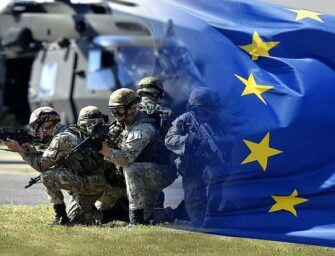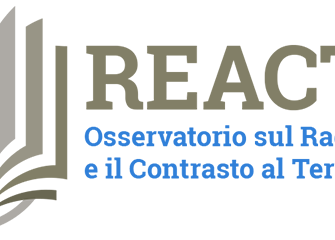#ReaCT2021 – Terrorism and immigration: links and challenges
by Claudio Bertolotti
Terrorism and immigration: links and challenges
 89% of terror attacks in Europe were carried out by second and third generation “immigrants” and first generation immigrants, both regular and irregular. A statistical correlation between immigration and terrorism does therefore exist; however, the number of terrorists compared to the total number of immigrants is so marginal that it makes such correlation insignificant: the order of measurement is one unit per million immigrants.
89% of terror attacks in Europe were carried out by second and third generation “immigrants” and first generation immigrants, both regular and irregular. A statistical correlation between immigration and terrorism does therefore exist; however, the number of terrorists compared to the total number of immigrants is so marginal that it makes such correlation insignificant: the order of measurement is one unit per million immigrants.
The origins of terrorists: immigrants or Europeans?
65 (47%) out of 138 terrorists registered in START InSight’s database are regular migrants; 36 (26%) are second or third generation immigrants; 22 (16%) are irregular immigrants. The latter figure is on the rise and represents 25% of perpetrators in 2020. Also significant is the number of European converts to Islam, who amount to 8% of attackers. Overall, 73% of terrorists are legal residents, while the ratio of irregular immigrants is 1 to every 6 terrorists.
Is there a link between immigration and terrorism?
Immigration does “contribute” to the spread of terrorism from one country to another, but immigration per se is unlikely to be a direct cause of terrorism. There’s no empirical evidence so far that first generation immigrants are more inclined to become terrorists. However, migratory flows from Muslim majority countries where terrorism is an occurrence, are thought to exercise a significant influence on attacks in the country of destination.
Are immigrants terrorists?
 It’s difficult to argue the existence of a causal link between the two phenomena: therefore, being a migrant would not be a triggering factor for joining terrorism.
It’s difficult to argue the existence of a causal link between the two phenomena: therefore, being a migrant would not be a triggering factor for joining terrorism.
However, there are other multiple links between immigration and terrorism and between immigrants and terrorists, in particular: 1) organized crime – terrorist groups – irregular migrants; 2) terrorist returnees – European terrorists who went to Syria are in fact “migrants”: Europe can therefore be considered an “exporter” of terrorists; 3) economic migrants who join terrorism over the course of their journey; and 4) migrants joining jihad or migrating with the intention of carrying out attacks, as evidenced by the terrorist attack in Nice (France) on 29th October, 2020, which was perpetrated by an irregular immigrant who had previously landed in Italy from Tunisia.
Ethno-national map of terrorism in Europe
Jihadist radicalization fuelling terrorism in Europe affects some specific national / ethnic groups. There is a proportional relation between major immigrant groups and terrorists. The terrorists’ nationalities, or their families of origin, are in line with the dimensions of foreign communities in Europe. Maghrebi origins prevail: the ethno-national groups which are mostly afflicted by a link to terrorism are the Moroccan (in France, Belgium, Spain and Italy) and Algerian (in France).
An increase in the number of irregular migrants heightens the potential risk of terrorism
16% of terrorists are irregular immigrants (2014-2020). 25% in 2020.
In France, the number of irregular immigrants involved in terrorist attacks is growing. Until 2017, no attack had seen the participation of irregular immigrants; in 2018, 15% of terrorists were irregular immigrants: in 2020, they reached 33%. Belgium reported that during 2019 they identified asylum seekers linked to radicalism or terrorism (Europol).
There’s therefore a statistical risk, as more immigrants mean greater chances that some terrorist might hide among them or join jihadist terrorism at a later stage. But despite this correlation, there is no manifest causal link: the choice of becoming a terrorist is not determined or influenced by one’s status as a migrant, but a series of factors such as individual experiences; living conditions at the time of arrival; voluntary or involuntary contacts with criminal or jihadist networks can all play a role.











































